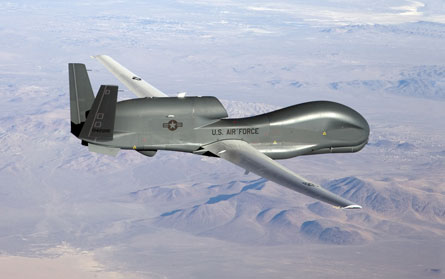[Clarification: Northrop Grumman adds that any conclusions about the suitability or the cost of the Chloe system would be premature until an ongoing analysis is complete in 2009.]
After a US-sponsored study and flight tests, Northrop Grumman has determined that using unmanned air vehicles to thwart missile attacks on airliners near airports is too costly to be practical.
The results appear to spell the end for the Department of Homeland Security's Project Chloe, which has considered using a long-endurance UAV such as the Northrop RQ-4 Global Hawk to protect airliners from shoulder-fired missiles. In DHS's vision, a single UAV would loiter at about 65,000ft (19,800m) above an airport. It would be able to detect missile launches fired at airliners inside the airport's traffic pattern. The UAV would then fire a laser through more than 16km (10 miles) of atmosphere to scramble the missile's infrared-seeker.
 |
|---|
© USAF |
Northrop's study and flight tests for Project Chloe, however, reveal the concept is far more complex and costly than DHS officials imagined.
Flight tests in August using the Scaled Composites White Knight testbed proved that a high-altitude UAV could detect and jam an IR-guided missile at long range. But "there's still a number of technology gaps before you'd have the right kind of system", says David Denton, a Northrop programme manager.
Northrop's study also shows that each airport must be guarded by three high-altitude UAVs on station simultaneously, instead of a single aircraft.
"You're looking at a fleet of great numbers," Denton says. "It becomes a very costly approach."
Northrop plans to deliver a concept of operations to DHS by the end of January to complete its part of the Project Chloe contract.
"DHS has not suggested there's any continuation of the programme for Chloe and anti-Manpads [shoulder-launched missiles]," Denton says. "They have not suggested to us there is any more funding."
Instead, Northrop believes a cheaper and more effective solution is to install laser-based countermeasures on the world's airliners, starting with the aircraft leaving US airspace and landing in potentially hostile or unstable areas.
Source: Flight International























